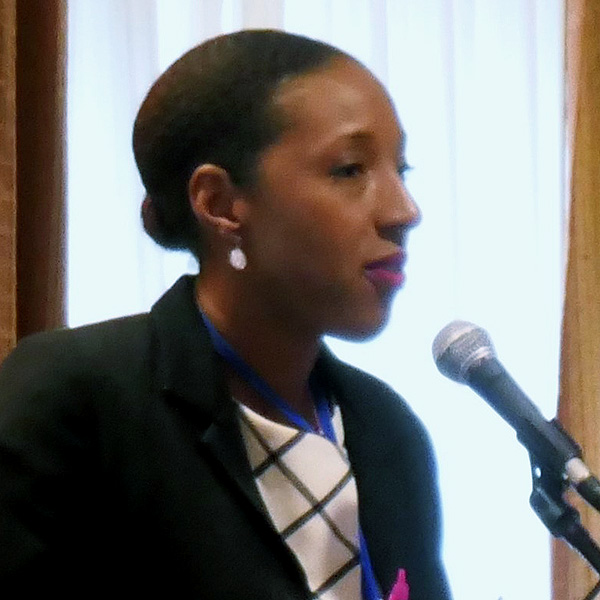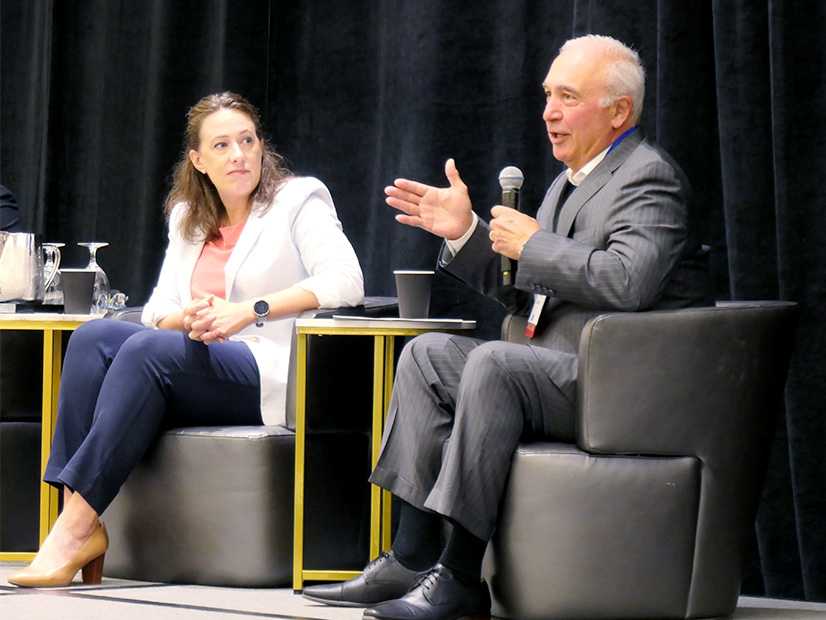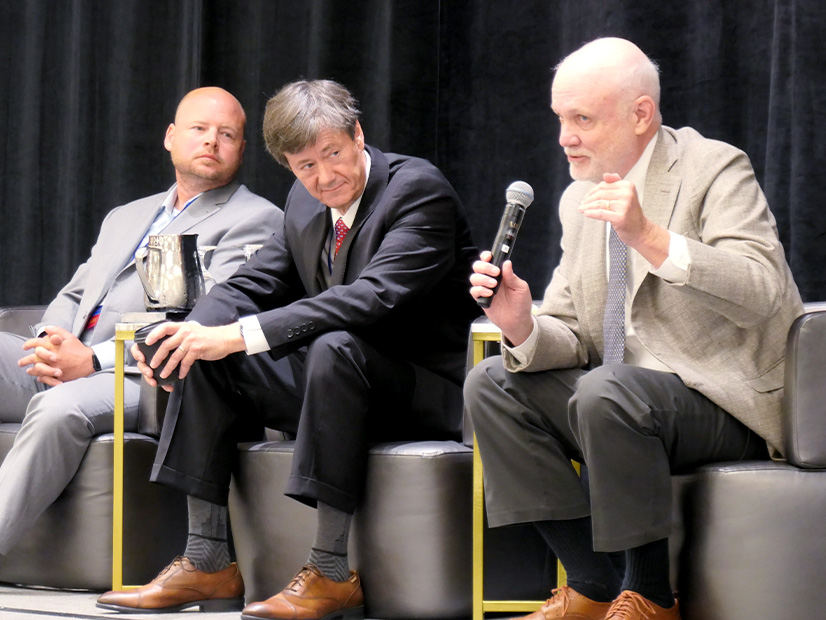Planning Committee
Stakeholders Endorse RRS Load Model
VALLEY FORGE, Pa. — The PJM Planning Committee last week endorsed the load model recommended by the RTO for calculating the load forecast for the 2023 reserve requirement study (RRS).
The selected distribution, derived from data from 2013 through 2019, has a more conservative estimation of future loads than the model used in the 2022 study, with loads being higher in most percentiles.
The study will set the installed reserve margin and forecast pool requirement for the 2027/28 delivery year and inform any modifications to the previous three years’ values.
Alongside the Probabilistic Reliability Index Study Model (PRISM) program, PJM will use software developed for the hourly loss-of-load modeling used for effective load-carrying capability (ELCC) studies in this year’s RRS. PJM says the ELCC software has the potential to produce better results and will generate two sets of data, which will be presented to stakeholders when the study is complete for endorsement of one set of outcomes. (See “Reliability Requirement Study to Use New Software,” PJM PC/TEAC Briefs: May. 9, 2023.)
The load model selection process is required only for the PRISM software, which requires normal distributions of data, whereas the PJM forecast data are empirical. The ELCC process models the monthly peak load uncertainty by deriving load scenarios and frequency weight for each delivery year between 2012 and 2021.
The top three performing load models all project PJM’s peak overlapping with the peak for the “World,” defined as MISO, NYISO, TVA and VACAR. The RTO recommends the World peak be moved to a different week in July to avoid the overlap, which historically it has found unlikely and would lead to a decreased capacity benefit of ties (CBOT) value.
PJM’s Patricio Rocha Garrido said in the past 24 years, the World and PJM have not peaked on the same day in just over half those years. The PRISM software used to conduct the load model analysis treats each day as a five-day week, which would compound the impact a coincident peak would have in the data.
PJM Presents Preliminary Capital Budget
PJM presented a $44 million capital budget to stakeholders, a $2 million increase over the amount it projects to spend in the 2023 fiscal year. The preliminary budget is dominated by the cost of current applications and systems reliability, facilities and technology infrastructure and application replacements.
Though the $44 million ask is an increase over recent years, PJM’s James Snow said the RTO remains within the $45 million range it expected to spend.
Spending on applications makes up nearly half the budget at $21 million, which includes upgrades to PJM’s Dispatcher Application and Reporting Tool (eDART) system, improvements to credit or risk applications and cybersecurity. Facilities and technology spending would sit at $11 million and include replacement of backup generators at the control center and server upgrades.
The $8 million in proposed application replacements includes spending on the Next Generation Markets Systems (nGEM) project being undertaken with several other RTOs to build a new market clearing engine and related software.
Spending on new products and services would be $3 million, while $1 million would be spent on interregional coordination.
Migration of eDART Accounts to New Platform Underway
PJM began the process of working with members to transition from managing their accounts through eDART to its Account Manager software. The migration of the 7,443 accounts in eDART started on July 25 and will continue through Dec. 13.
PJM’s Maria Baptiste recommended users begin transitioning as quickly as possible to give themselves time to work through any issues that may arise. The Account Manager dashboard can be used to create new user accounts, reset passwords, unlock accounts and grant or terminate eDART account access.
Transmission Expansion Advisory Committee
AEP Proposes $202 Million Rebuild of 345-kV Line
American Electric Power proposed rebuilding its 51.8-mile, 345-kV Desoto-Sorenson line, telling the Transmission Expansion Advisory Committee last week the majority of the lattice structures and conductor on the line are more than 70 years old. The utility proposed rebuilding the line in a double-circuit configuration at a $202.4 million cost, including new structure entrances at the Sorenson, Keystone and Desoto substations.
The line has experienced 22 momentary outages and 12 permanent outages since 2014. AEP has found that the paper-expanded conductor installed on it is difficult to splice during repairs because of limited replacement materials.
AEP also evaluated rebuilding the line as a single circuit, but it determined that because of the number of generators seeking to interconnect on both sides of the line, as well as its status as the only transmission connecting the Fort Wayne grid to the 345-kV Tanners Creek hub, a double circuit would be more appropriate. The cost of a single circuit rebuild was estimated at $187.4 million.
FirstEnergy Presents Data Center Interconnection Projects
FirstEnergy proposed $27 million in upgrades to meet a projected 336 MW in data center load growth near its proposed 230-kV Sage substation.
The proposal includes a $1.5 million expansion of the substation, including installing three additional 230-kV circuit breakers, two new transformers and two 34.5-kV buses. The 138-kV Bartonville-Meadow Brook line also would be upgraded with an additional wave trap and revised relay settings for $700,000.
The third phase of the project, estimated at $25 million, would add nine additional breakers to the substation, bringing the total to 15, and terminate the 230-kV Doubs-Eastalco line at Sage. The substation also would be looped into the 230-kV Doubs-Lime Kiln line.
PJM’s Sami Abdulsalam said the data center load was identified in the 2022 Regional Transmission Expansion Plan (RTEP) Window 3, which is in the proposal selection phase, and the proposal addresses the interconnection requirements for the load.
Philip Sussler, of the Maryland Office of People’s Counsel, asked if there was any transmission headroom available from the deactivation of the Eastalco Aluminum plant, which used about 300 MW prior to its retirement in 2010.
FirstEnergy’s Larre Hozempa said some of that transmission capability has been consumed by load growth over the intervening decade and the new data center load is expected to be significantly larger than the plant’s. The load included in Window 3 was about 1,300 MW, with 900 MW already under contract.
Update on RTEP Windows
Abdulsalam also presented an update on the 2022 RTEP Window 3 and the first window of the 2023 RTEP, which opened on July 24 and is set to close Sept. 25. (See “2023 RTEP Window 1 to Open this Month; 2022 RTEP Window 3 Selections in September,” PJM PC/TEAC Briefs: July 11, 2023.)
Window 3 closed on May 31 after receiving 72 proposals from 10 entities, and PJM has completed the individual proposal screening and planning evaluation steps. It now is conducting proposal scenario evaluations. In developing and analyzing dozens of scenarios, PJM looks at the full proposals made and modifications to them, and combines elements to create mix-and-matched variants.
Abdulsalam said the window had an atypically low rate of cost-containment commitments, signaling that developers believe there is higher risk associated with the projects and it may be harder to ensure cost estimates remain accurate.
Ranking of the scenarios will include scalability to address future needs, use of existing rights of way, cost evaluation and avoiding redundant capital investment. Abdulsalam said part of the analysis will include looking at other proposed projects outside the window and evaluating if they can be modified or synergized with the RTEP to reduce costs. He said the $786 million in transmission upgrades associated with the deactivation of the 1,295-MW Brandon Shores coal generator near Baltimore is one such project.
Some of the proposals that were focused on addressing the 2027 model needs do not appear to be expandable to address needs expected in the following year, Abdulsalam said. Analysis of the 2028 model also shows more grid reinforcements needed in the eastern and southern Dominion regions.
PJM is aiming to hold a special TEAC meeting in October to present the window evaluation results, followed by asking the Board of Managers for approval in December.




